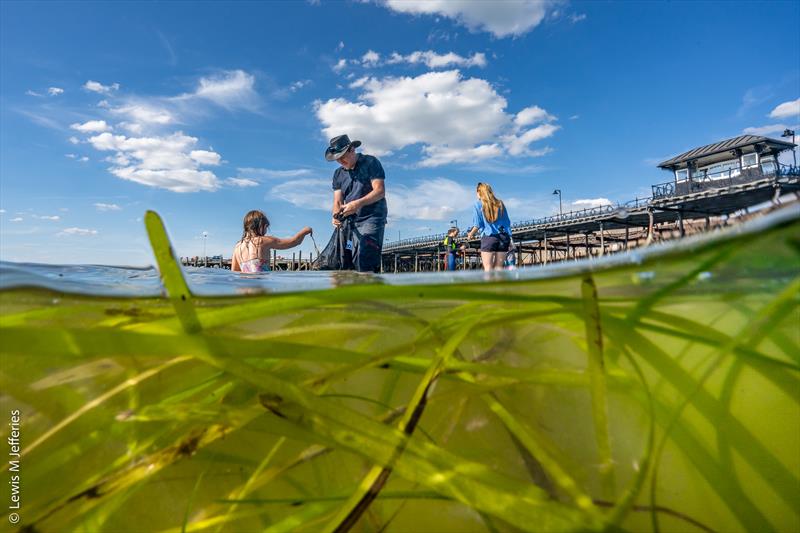
Setting sail on our steps to sustainability
by Jacob Tyson 18 May 11:12 BST

Seagrass seed collection on Isle of Wight © Lewis Jefferies
Andrew Simpson Yachting is committed to protecting the waters we love by taking meaningful steps toward sustainability. As sailors, we recognise our responsibility to minimise our impact on marine ecosystems.
That's why we are embracing a greener approach with the following initiatives:
Sails Over Engine
Whenever conditions allow, we prioritise sailing over motoring to reduce fuel consumption and lower emissions.
Using Shore Facilities
To prevent pollution, we utilise onshore waste disposal and restroom facilities wherever possible rather than discharging into the water.
Responsible Anchoring
We use mooring buoys where available to protect fragile seabeds from anchor damage and where we anchor, we ensure we are in an area of sand or mud.
Avoid Wildlife - Slow Down
To prevent disturbances to marine life, we reduce our speed and maintain safe distances from wildlife, ensuring they can thrive in their natural habitat.
Nothing Goes Overboard
We operate under a strict "leave no trace" policy, keeping all waste, recyclables, and organic matter onboard until proper disposal is available.
Boatfolk - Renewable Energy and Copper Coat
As a Boatfolk bertholder our energy supply comes from renewable sources while we support Boatcare using Coppercoat antifouling solutions to minimize toxic runoff during maintenance.
Eco-Friendly Products - Action for the Future
We are conscious to choose biodegradable and environmentally friendly cleaning products to ensure that harmful chemicals don't enter the ocean.
Boating's Relationship with protecting seagrass eco-systems Boating's relationship with protecting seagrass ecosystems
Across its near-global range, seagrass increases biodiversity, locks down carbon, protects coasts, absorbs excess nutrients and pathogens, provides a sink for microplastics, nursery grounds for commercially important fisheries and habitat for charismatic species such turtles, dugong, and seahorses. Seagrass ecosystem services contribute to the wellbeing of people and planet but like many natural systems, seagrass is threatened across its range. In the UK we have lost up to 92% of our meadows over the past 100 years.
It's critical that we all do our part now towards planetary recovery. Seagrass grows in shallow sheltered coastal areas which often also represent safe havens for boaters, the seagrass contributing to the ecological stability of that haven. This means that sailors are a key stakeholder that can support seagrass monitoring, protection and recovery.
You can become a "Seagrass Safe Sailor" and a "Seagrass Spotter" with Project Seagrass.
Mapping is one of the recognized global challenges for seagrass, but this is where the sailing community can help, by taking georeferenced photos of seagrass wherever they come across it and submitting the data to Seagrass Spotter.
""The great thing is that seagrass and people are compatible, we should be using the valuable ecosystem services, including safe havens, that seagrass provides, we just need to do this in a more sensitive way. It's heartening to see impactful and progressive organisations like ASY working hard to help the sailing community to improve sustainability through these supporting guidelines."" Dr Leanne Cullen-Unsworth, CEO, Project Seagrass
Through the steps outlined above, we aim to preserve the beauty of our oceans for generations to come. Sustainability isn't just an option—it's a necessity. We encourage all sailors to join us in adopting eco-conscious practices on the water.